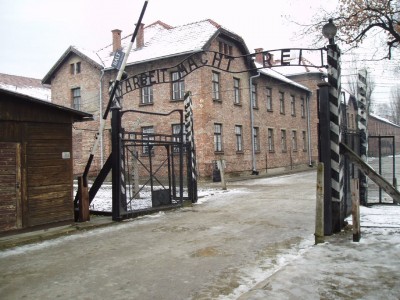We had a discussion in my High school literary class. How do the people behave in the funeral cortege? People next to the coffin are sad, in tears, with slow movements, sobbing, and usually family members. Then follows people who are silent and watching in front of them, then people watching a bit around, then some people who talk a little, and people that have some conversation and at the end there are people who even tell jokes and laugh.
When we had this class I was young, and I found this discussion strange. But as I am older and I have experienced sorrow and life strokes to its fullest, I see it with different eyes. That story is true.
In Kertész’s essay “Who Owns Auschwitz?”, I found great observations regarding kitsch. In Young’s explanation about choosing the memorial design I found something strange that annoys me. How come that the same people choose the most important memorabilia monuments on the Earth? Because, my emotions are not the same as anybody else’s. Choosing the best fit monument, to me looks like job survey. The great example, is the “disappearing monument” in Kassel. Graffiti with Jewish stars, Nazi’s swastika, various drawings that appeared on the surface of this monument – that finally disappeared, wanted to represent memory that is stick into our souls and hearts for ever. But what about future generations, people born after 1993. There is no monument, no sign, just maybe some photo of couple in love.
What about the young couple making love before being gassed – fully aware of their destiny. No chance to make children, to tell their story, to make love just another time.
Kertész’s essay covers his observation about two movies “Schindler’s List” and “Life is beautiful”. I saw both of them. I like his conclusion about Benini that, “He has and has the courage (and also the strength) to lay his claim to this sad inheritance.” That is very true. We all have to know. There is no happy ending of Holocaust story. There are numerous stories about this. No need to repeat those.
I can only lay out my impression. It is a life time burden for person who survived; it took Nechama 30 years of waiting and growing up the idea to tell her story. All the stories that came from people who had the courage to face their personal horrible Holocaust history, they came straight from their heart. And we have to listen and remember. Understanding is inapprehensible to the evil to its fullest. It really happened. It is impossible to describe the stench in the air, or rape with a stick, naked in front of everybody, when something pushes you to watch and to float into some safe haven of your own, not knowing your own destiny, waiting for the mercy of some PERSON in charge of the lives, who treats people as no-people. It is insulting to sugar coat it.
We have various forms to pass it on – art in all its forms and retelling the stories.
So the big question “Who Owns Auschwitz?”. We all do. It is our duty to pass the story, to remember and never to happen again. Not to allow them end in the air as the Jewish grave.
